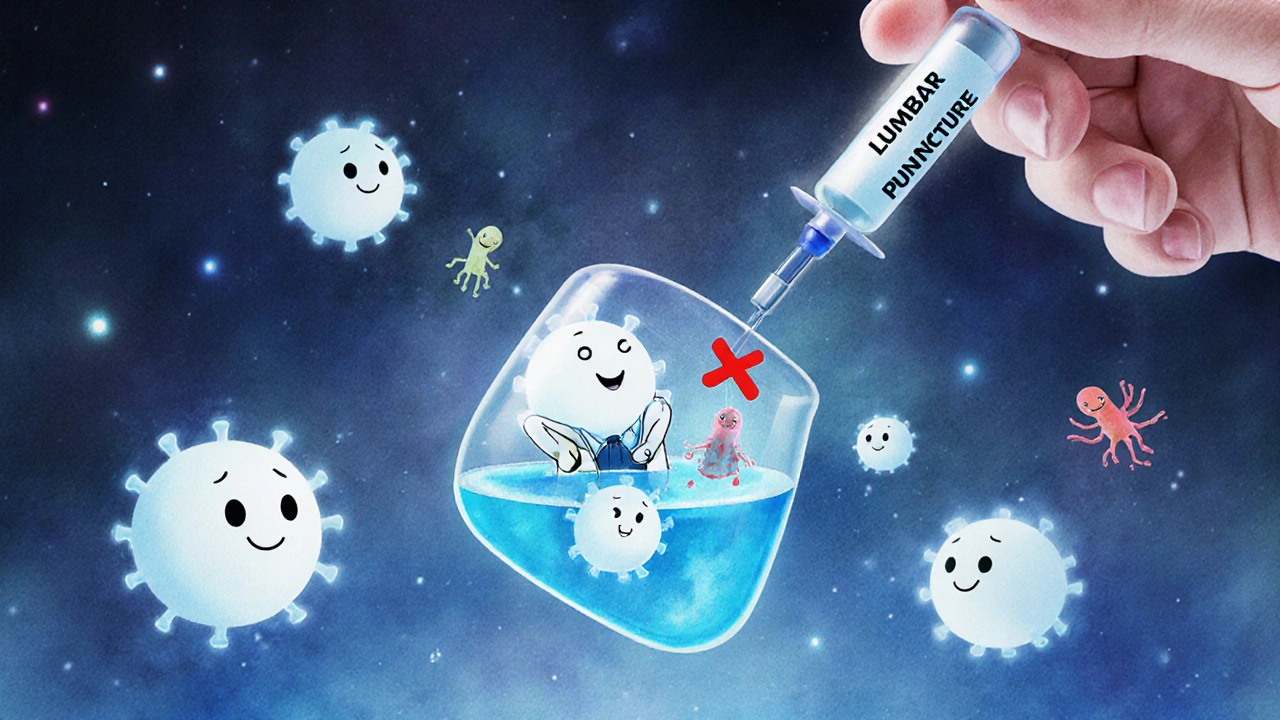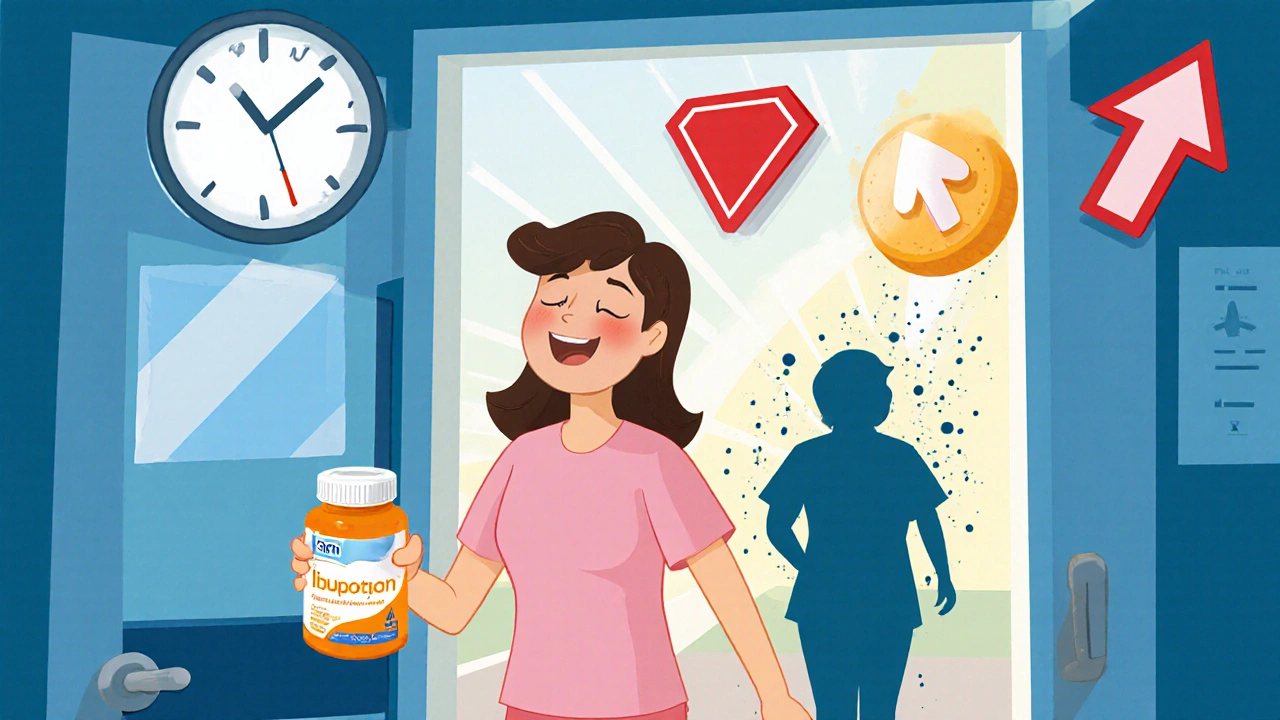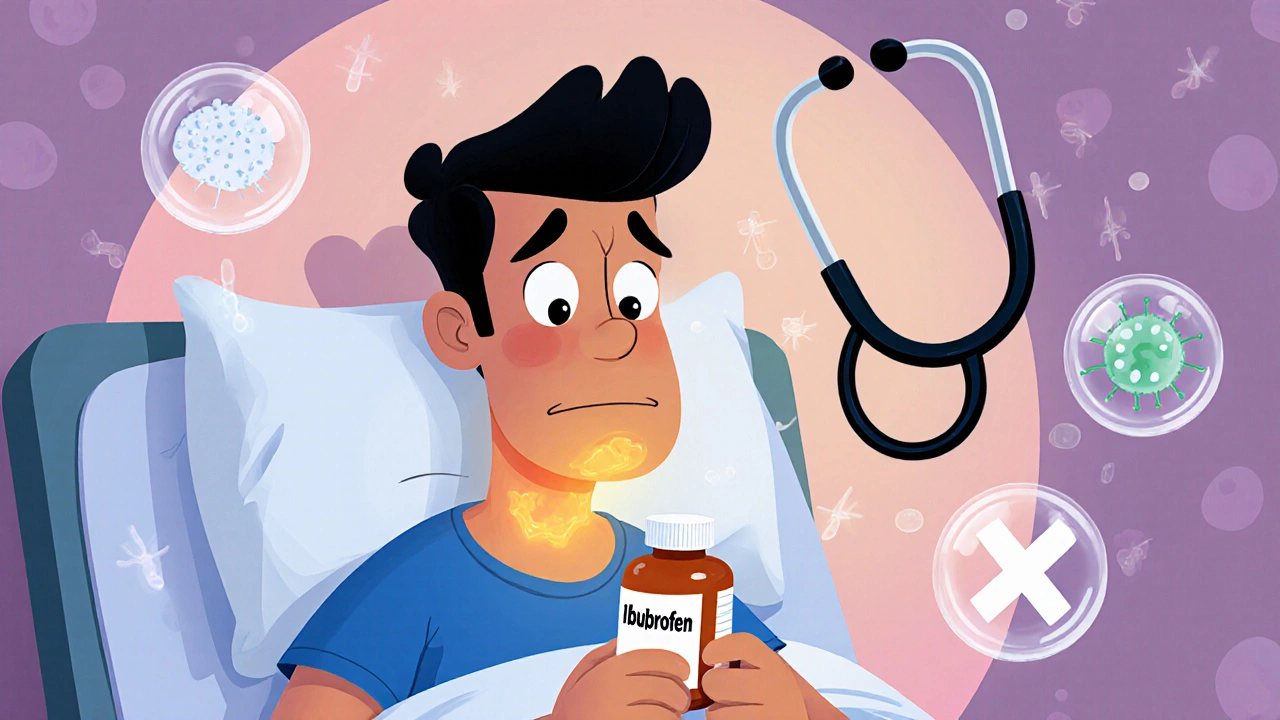DIAM Symptom & Medication Checker
How This Tool Works
This interactive tool helps you assess whether your symptoms might indicate drug-induced aseptic meningitis (DIAM) based on medical guidelines. It checks for the key diagnostic criteria mentioned in the article.
Timing: Symptoms started within hours or days after taking the drug
Exclusion: No signs of infection, cancer, or autoimmune disease
Improvement: Symptoms get better after stopping the drug
Recurrence: Symptoms return if you take the drug again (only tested if safe)
Most people think of meningitis as a scary bacterial infection that comes with high fever, stiff neck, and confusion. But there’s another kind - one that doesn’t come from germs at all. It’s triggered by medications you take for something else. This is called drug-induced aseptic meningitis (DIAM). It’s rare, often missed, and can look exactly like the infectious kind. The good news? It usually goes away fast - once you stop the drug causing it.
What Does Drug-Induced Aseptic Meningitis Actually Feel Like?
If you’ve ever had a bad headache that won’t quit, along with a fever and neck stiffness, you might worry about meningitis. And for good reason - those are the classic signs. In DIAM, symptoms are nearly identical: 98% of people get a severe headache, 89% have neck stiffness, 76% run a fever, and 65% can’t stand bright lights. Some feel confused or nauseated. It hits hard and fast.
But here’s the twist: you didn’t catch it from someone. You didn’t get sick from a virus. It’s your own body reacting to a drug you took - maybe just yesterday.
Unlike viral meningitis, which can linger for over a week, DIAM usually clears up in 24 to 72 hours after stopping the medicine. Some people still get a dull headache for up to two weeks, but the worst of it is gone. That quick improvement after stopping the drug is one of the biggest clues doctors look for.
Which Medications Are Most Likely to Cause This?
Not every pill can cause this. But certain classes of drugs are well-documented culprits. The most common ones, based on over 300 reported cases in France’s national drug safety database, are:
- Human intravenous immunoglobulin (IVIG) - used for immune disorders and infections. Accounts for nearly 29% of cases.
- NSAIDs - like ibuprofen, naproxen, and even high-dose aspirin. Responsible for over 21% of cases.
- Antibiotics - especially trimethoprim-sulfamethoxazole (TMP-SMX). This one makes up 70% of all antibiotic-related cases.
- Vaccines - rare, but possible. Only about 0.3% of post-vaccine meningitis cases are true DIAM.
- Monoclonal antibodies - newer drugs used in rheumatology and cancer. Cases have doubled since 2010.
People with lupus or other autoimmune diseases are at higher risk when taking NSAIDs - up to 40% of NSAID-related DIAM cases happen in this group. HIV patients on TMP-SMX are also more vulnerable. If you’re on any of these drugs and suddenly get a bad headache and fever, don’t assume it’s just a cold.
How Do Doctors Know It’s Not Bacterial Meningitis?
This is the hardest part. The symptoms are the same. The fever, the stiff neck, the confusion - they don’t tell the story. So doctors rely on the cerebrospinal fluid (CSF), the liquid that surrounds your brain and spine. A spinal tap (lumbar puncture) is the key test.
In DIAM, CSF shows:
- White blood cell count between 100 and 1,000 per microliter (mostly neutrophils)
- Normal sugar levels (92% of cases)
- Elevated protein (78% of cases, usually 45-250 mg/dL)
- Negative bacterial cultures - no germs grow in the lab
That last point is critical. If bacteria grow in the culture, it’s not DIAM. It’s bacterial meningitis - and that’s an emergency. But if the culture is clean, and your symptoms match the timeline of a recent drug dose, DIAM becomes the likely answer.
Here’s the problem: viral meningitis can look exactly the same in CSF. So doctors don’t just rely on the lab. They ask: When did you start the drug? Did you take it before? Did you feel fine until yesterday? Did symptoms get worse after taking another dose? That’s the real diagnostic tool.

Diagnosis Isn’t Just About Lab Results - It’s About Timing
The American Academy of Neurology says you need four things to confidently diagnose DIAM:
- Timing: Symptoms started within hours or days after taking the drug.
- Exclusion: No signs of infection, cancer, or autoimmune disease causing the meningitis.
- Improvement: Symptoms get better after stopping the drug.
- Recurrence: Symptoms come back if you take the drug again (only tested if safe and necessary).
Meeting all four gives you 95% confidence in the diagnosis. Most doctors don’t rechallenge patients on purpose - it’s risky. But if someone had a mild case and needs the drug again (like a transplant patient on lifelong immunosuppressants), they might test it under close watch.
One real case from Canada involved a 42-year-old woman with lupus who took ibuprofen for joint pain. Three days later, she had a pounding headache and couldn’t bend her neck. Her CSF showed inflammation, but no infection. She stopped the ibuprofen. By day two, her fever was gone. By day four, she was back to normal. Her doctor later confirmed it was DIAM - not because of the lab, but because of the timeline.
Why Is This Condition Underdiagnosed?
Many doctors don’t think about it. If you walk into the ER with a stiff neck and fever, the first thought is: “Is this bacterial? Start antibiotics.” And you’re right to do that - because bacterial meningitis kills fast. But in the 10-20% of cases where it’s actually DIAM, antibiotics won’t help. And you might stay in the hospital longer than needed.
Underreporting is huge. If you get a headache after taking Advil and it goes away in a day, you probably don’t tell your doctor. But if it gets worse, and you end up in the hospital, that’s when it’s caught. Many cases are dismissed as “viral” or “unexplained.”
Also, some drugs are easy to miss. Over-the-counter meds, herbal supplements, even recent vaccines - if your doctor doesn’t ask for a full list, they might not catch the link.

What Happens After Diagnosis?
There’s no special treatment. No steroid shots. No antiviral pills. The only thing you need to do is stop the drug. That’s it.
Most people feel better within 1-3 days. A few might have lingering headaches for up to two weeks. No long-term damage is expected if the drug is stopped early. But if you keep taking it? Symptoms can return - sometimes worse. And in rare cases, repeated episodes can lead to chronic inflammation or nerve damage.
Doctors will likely advise you to avoid that drug forever. If you need a pain reliever, they’ll suggest something else - like acetaminophen, which has almost no link to DIAM. If you’re on a critical medication like IVIG or a biologic for rheumatoid arthritis, your doctor may switch you to a different drug in the same class or adjust your dose.
What Should You Do If You Suspect This?
If you’re on any of the high-risk drugs and suddenly develop:
- A severe headache that’s different from your usual
- Fever that doesn’t respond to typical meds
- Neck stiffness or pain when bending forward
- Sensitivity to light or confusion
Don’t wait. Go to urgent care or the ER. Tell them: “I’m on [drug name] and I started feeling this way after taking it.” Bring your medication list - including vitamins, supplements, and OTC painkillers.
Doctors will likely do a spinal tap to rule out infection. If it’s DIAM, you’ll be sent home with instructions to stop the drug and watch for recurrence. No antibiotics needed.
It’s not something you can diagnose yourself. But knowing the connection between your meds and your symptoms can save you from unnecessary hospital stays, antibiotics, and anxiety.
What’s Next for This Condition?
Researchers are working on better ways to spot DIAM before it gets serious. One NIH-funded study is looking at specific proteins and cytokines in CSF that might distinguish drug-induced inflammation from infection. If they find a reliable marker, we could avoid spinal taps in some cases.
Also, as more biologic drugs enter the market - especially for autoimmune diseases - DIAM cases are rising. From 2% of cases in 2010 to nearly 9% today. Doctors in rheumatology and oncology clinics are now trained to watch for it.
But the biggest change? Awareness. More people need to know that a common painkiller can trigger a meningitis-like reaction. And more doctors need to ask about meds - not just symptoms.


Dana Dolan
November 20, 2025
Wow. I took ibuprofen for a headache last month and ended up in urgent care thinking I had meningitis. Turned out it was just a migraine-but now I’m paranoid every time I pop a pill. This post literally gave me chills. Thanks for laying it out so clearly.
seamus moginie
November 21, 2025
This is nonsense. You're telling me that a simple Advil can mimic bacterial meningitis? That's a pharmaceutical industry scare tactic to push people toward more expensive alternatives. I've taken NSAIDs for 20 years and never had a problem. Your 'diagnosis' is based on correlation, not causation.
Ellen Calnan
November 22, 2025
There's something deeply poetic about how our bodies betray us with the very things meant to heal them. A painkiller becomes a poison. A vaccine, a trigger. We think medicine is a shield-but sometimes, it's a mirror. And in that reflection, we see how little we truly understand about our own biology. This isn't just a medical footnote. It's a philosophical rupture.
I’ve known people who got sick after vaccines, after antibiotics, after that one OTC pill they swore was harmless. No one listens until it’s too late. Until the spinal tap confirms what they already felt in their bones: something’s wrong. And it’s not the virus. It’s the cure.
Maybe the real epidemic isn’t infection-it’s our blind faith in pills. We swallow them like prayers. And when they fail? We blame the body. Not the bottle.
Richard Risemberg
November 23, 2025
Man, this is wild. I work in a clinic and we see this all the time-except we call it 'viral meningitis' because no one thinks to ask about meds. I had a guy last week with a fever and neck pain-he’d been taking naproxen for his back. We pulled the CSF, no bugs, he stopped the drug, and boom-by day three he was hiking again. We didn’t even flag it as DIAM until he mentioned the meds. Doctors need a checklist. Like, 'Did you take anything new in the last 72 hours?' Should be step one, not step seven.
Also, kudos to the author. This is the kind of info that saves lives. Not everyone needs to know how to read a CSF report-but everyone should know that their ibuprofen might be the villain.
Andrew Montandon
November 24, 2025
YES. YES. YES. This is so important! I’m a nurse, and I’ve seen too many patients get antibiotics for days when they just needed to stop their biologic. And the worst part? They’re terrified to tell their rheumatologist they stopped the drug because they thought it was 'just a headache.' We need public awareness campaigns-like the ones for stroke symptoms-but for 'drug-triggered meningitis.' Call it 'The 3-Day Rule': if you took a new med and got stiff neck + fever within 72 hours? Stop it. Call your doc. Don’t wait.
Also, please tell your readers: if you’re on IVIG or monoclonals, keep a symptom journal. Write down every pill, every shot, every herbal tea. You’ll thank yourself later.
Sam Reicks
November 26, 2025
So let me get this straight. You're saying the government and Big Pharma don't want you to know that your meds can cause meningitis? But they're not hiding it-they're publishing papers in journals? And the CDC tracks this? And doctors are trained to recognize it? This is just a distraction. The real issue is that people are too lazy to read the damn insert. Or they think 'natural' means safe. My cousin took echinacea and ended up in the ICU. Guess what? No one blamed the herb. They blamed the system. Always the system.
Reema Al-Zaheri
November 26, 2025
Thank you for this comprehensive overview. The diagnostic criteria outlined-timing, exclusion, improvement, recurrence-are clinically sound and align with current literature. However, I would like to emphasize that the absence of bacterial growth in CSF does not automatically confirm DIAM; viral meningitis, particularly from enteroviruses, may present identically. The key differentiator remains the temporal relationship with medication exposure. In resource-limited settings, lumbar puncture may not be accessible, making patient history paramount. I urge clinicians to maintain a high index of suspicion, particularly in autoimmune populations on NSAIDs.
Michael Salmon
November 26, 2025
Oh great. Another ‘awareness’ post to make people paranoid about every pill they take. You’re telling me that if I take Tylenol and get a headache, it’s meningitis? What’s next? ‘Your water caused kidney stones!’? This is fearmongering dressed up as medicine. People need to stop Googling their symptoms and start trusting their doctors. Also, 98% headache? That’s not a symptom-it’s a statistic cherry-picked to sound scary. Real doctors don’t panic over a headache. They ask questions. Not you.
Joe Durham
November 27, 2025
I appreciate this post. Really. I had a friend who went through this after starting a new biologic for psoriasis. She was terrified, confused, and felt like she was being gaslit by her doctors because 'it couldn't be the drug.' It took three ER visits before someone asked, 'What did you start taking?' She cried when they said, 'Stop it.' It was that simple. I wish more people knew this could happen. It’s not about fear. It’s about listening-to your body, and to your meds list.
Derron Vanderpoel
November 28, 2025
OMG I think I had this last year!! I took ibuprofen for my period cramps and then BAM-headache so bad I couldn’t open my eyes, fever, neck felt like concrete. I thought I was dying. Went to the ER, they did a spinal tap, said 'probably viral' and sent me home. I didn’t connect it to the Advil until now. I’ve never taken it since. I’m not even mad, just… wow. I feel like my body was screaming and I didn’t hear it. Thank you for this. I’m sharing this with everyone I know.
Timothy Reed
November 30, 2025
This is an excellent summary of a condition that is under-recognized but clinically significant. The four diagnostic criteria are well-articulated and align with current guidelines. I would only add that clinicians should consider DIAM not just in patients on high-risk drugs, but also in those with a history of drug hypersensitivity or autoimmune comorbidities. A simple medication review during any presentation of acute meningitis-like symptoms could prevent unnecessary interventions. Thank you for raising awareness in a clear, evidence-based manner.
Christopher K
December 1, 2025
So let me get this straight-you’re telling me that if I take a painkiller, I might get meningitis? And the solution is to… stop taking it? Wow. That’s like saying if your car breaks down, don’t drive it. Groundbreaking. Next you’ll tell me breathing oxygen can cause lung damage. This is why America’s healthcare system is broken. Everyone’s scared of everything. Take a pill. Live your life. Stop reading Reddit and go outside.
harenee hanapi
December 2, 2025
Wait-so you’re saying your own medicine can make you sick? And you didn’t know that? How could you be so naive? I’ve been warning people for years-everything is poison. Even water. Even sunshine. You think you’re safe because it’s FDA-approved? HA. The FDA is owned by Big Pharma. Your ibuprofen? It’s a Trojan horse. Your vaccines? They’re tracking you. Your supplements? They’re laced with microchips. And now you’re just learning this? You’re lucky you’re still alive. I’ve been researching this since 2012. No one listens. No one ever listens.
Ellen Calnan
December 3, 2025
Reema’s point about resource-limited settings is critical. In rural India, where I grew up, a spinal tap is a luxury. My aunt got sick after a steroid shot-fever, stiff neck, confusion. The village doctor gave her antibiotics for a week. She got worse. Then a traveling nurse asked, 'When did you get the shot?' They stopped it. She improved in 48 hours. No lab needed. Just someone who listened. That’s the real diagnosis: presence, not tests.